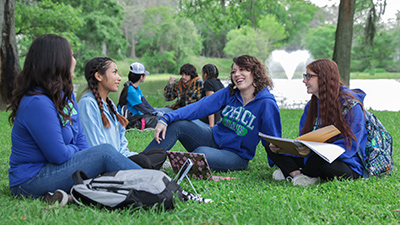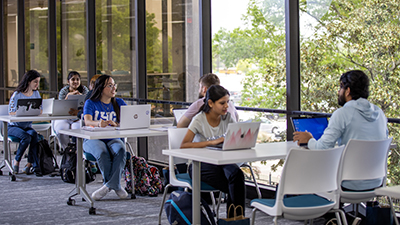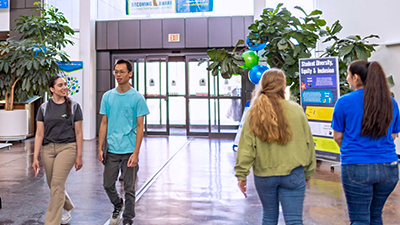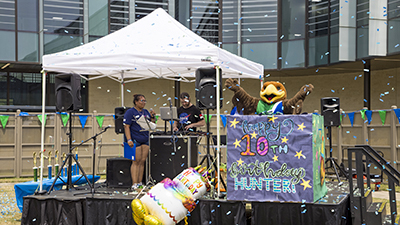
Student org's initiative prompts restoration project on UHCL campus
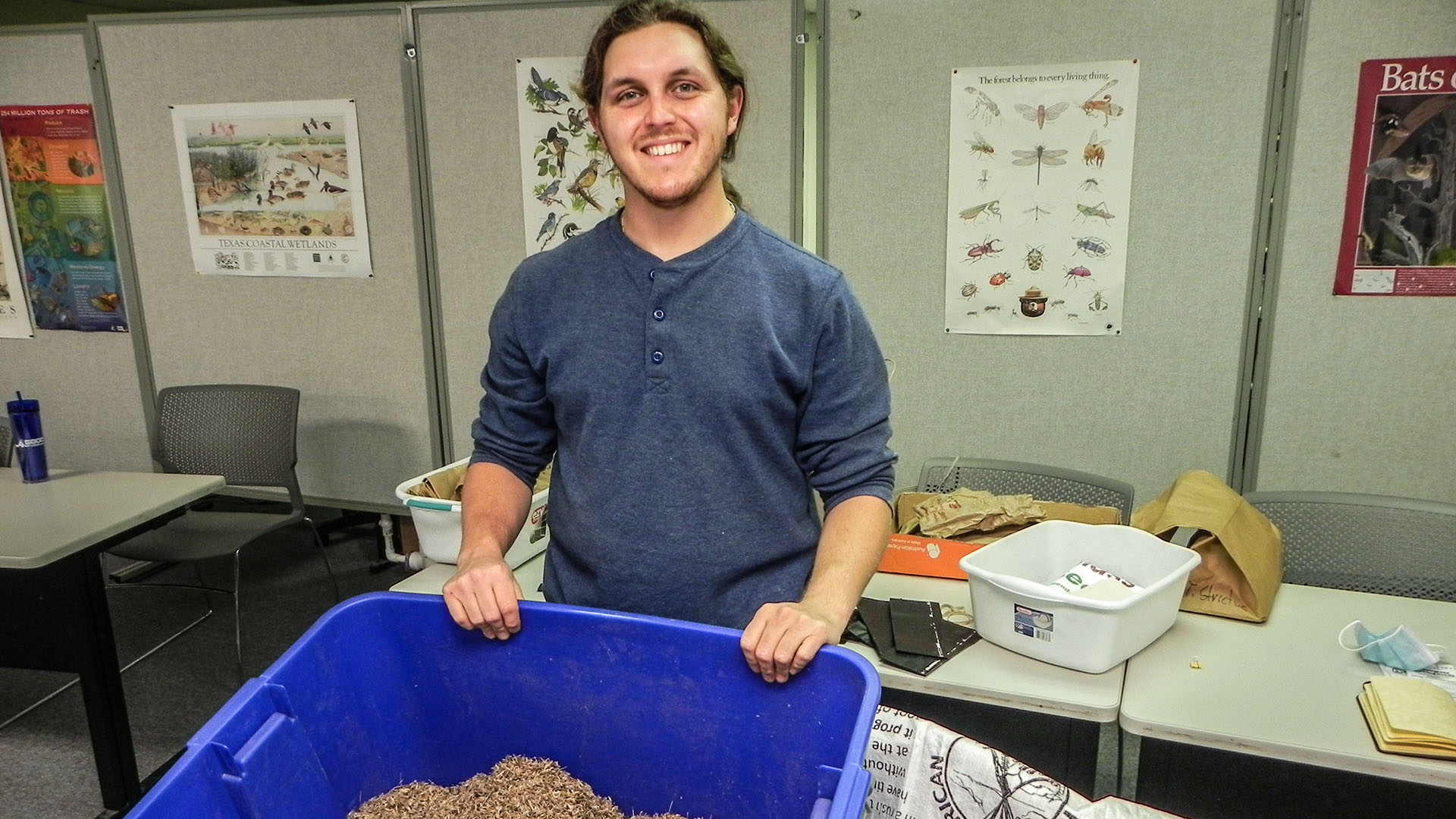
Before University of Houston-Clear Lake ever existed, the land it sits on was thickly covered in tallgrass prairie and colorful wildflowers, as far as the eye could see. These coastal tall grass prairies existed from Texas to Alabama and beyond, but today, this ecosystem is among the most endangered in Texas.
Jeff Fato, who is pursuing his Master of Science in Environmental Science at UH-Clear Lake, said that as a result of his work with a variety of research and environmental projects last summer, he wanted to find a way to offer UHCL students more environmental resources and opportunities to volunteer. He co-founded the Environmental Justice Association, so that he and other students could collectively create a positive impact on the campus community.
A drive or better yet, a walk on campus through Entrance 2 and to the university's beautiful nature trail will show the results of the group's efforts.
"We thought about how to expand our efforts on campus and beyond campus, and we've really stepped it up and begun partnerships with Armand Bayou Nature Center and the Environmental Institute of Houston here on campus," Fato said. "We got hooked on the idea of bringing back natural habitats that existed in our area and specifically on our campus, and we thought about how they could be seen as resources and benefits and make the campus more beautiful."
After consulting with Wendy Reistle, environmental education coordinator for EIH, Fato said they came up with a plan to bring a small garden featuring up to 75 native wildflower and grass species, also known as a "pocket prairie," to the campus.
Fato explained that a pocket prairie was a small planting patch, typically less than an acre, that combines native wildflowers and grasses to bring the aesthetically pleasing Gulf Coast Prairie to the urban landscape.
"It's more than just about beauty and ecosystem services," Fato said. "It's about valuing nature around us. We cohabitate with nature in an urban environment; it can be a source of education for anyone coming on campus. They can see what is native to this area but is almost completely gone. This is habitat we are trying to live alongside, and less than 1% of it remains."
Executive Director for the Institute of Human and Planetary Sustainability Megan Topham said executing the plan to install the pocket prairies involved communicating with multiple university stakeholders such as Facilities Management and Construction and the Office of Administration and Finance to explain the reasons for using the campus's grounds and resources for learning while also creating these habitats.
"Students in the organization had to talk about the social, environmental and educational benefits, and the entire process had to go through shared governance and be approved through University Council," Topham said. "We had unanimous support for this endeavor, so it was a win-win all around."
She said signage was added to explain more about the importance of the pocket prairies to the environment. "They help with flood control, runoff and carbon sequestration," she said. "These are all things we were looking at creating in a natural and inexpensive way."
Reistle added that it made a world of difference to have the administration hear directly from students about this initiative. "Having administrators discuss this with students and know that a student group was interested in doing this made getting the project moving much more powerful," she said. "Students can come together and make this kind of change on our campus."
Each year, Reistle said, numerous visitors from Texas Parks and Wildlife and the Texas Forest Service visit the UHCL campus. "They always compliment us on the beauty of our unique campus. Most colleges don't have what we have here," she said.
A second research project, funded by the Texas General Land Office, is underway by the nature trail. Reistle said about two acres had been designated to explore techniques for prairie restoration.
"This is all a beautiful example of gathering the skills of all our knowledge experts - students, faculty and staff - and applying what they know in real time," Topham said. "Students have spear headed these projects and providing information to others, like FMC, who are relying on their expertise. This is a great leadership opportunity and a chance to share knowledge. Everyone is working really well together on these projects."
Fato said his goal was to call attention to the need to bring back the original habitat to the campus environment. "We have to change people's minds, promote sustainability and resilience, and understand that actions have costs and reactions," he said. "We have to learn to live in a more balanced manner and this is how we are starting the conversation."
For more information about the Environmental Institute of Houston'sresearch and sustainability projects on campus, go online.
